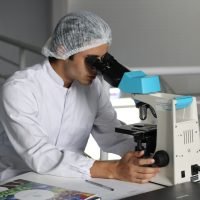Guide To Writing Scientific Lab Report

The scientific world is one that is rich in information and even richer in technology. For the longest time now, man has strived to understand all that is around him and find out more about nature through experimentation either for recreation, learning, or when his survival entirely depends on it. In the modern-day and age, things have really changed and the strides that have been made are quite huge and this means that things are also done differently. Lab analysis and experiments especially in the academic field are always followed by a lab report. This is of course in preparation for the career world as this is embedded into each and every one. So, as you begin writing scientific lab report, what do you really have to have in mind and what exactly are you expected to articulate for maximum effectiveness.
After sourcing from the best sources on a worldwide scale on what it takes to write the best scientific lab report, I have made a compilation of everything that you need to know so as to be at the top of your game. So, without further ado let’s dive right into it.
Title
The title is a very essential part of your lab reports as it gives it the identity and it gives the reader a clear line of where you are heading. The title should be brief and precise. It should only include the very essentials of the report and should tell the reader what you will be writing about. Remember that you should position your title in liaison with your hypothesis as this kind of flow will synchronize your whole paper. Always make the title descriptive, informative, and direct.
The first page of your lab report should be dedicated to the title, which is why it is called the ‘title page’. On top of the actual title of your paper, you should also include the name of the author(s) and the date it was published.
Table of content
The table of content is basically a guide of what shall be included in the paper and it only highlights the subtitles in the paper and the number page. It makes work easier and organizes your paper in a professional manner. It also comes in handy when you need to reference or scheme for certain information. Having in mind that you have already conducted the whole experiment beforehand then this should be very easy as it is basically a review of what you did. According to research done late last year showed that you should always start off by filling the table of content, it gives you the format that you will use in your paper. The reason behind this is because it follows the APA format of writing that is globally recommended and accepted for these kinds of papers. The APA format of writing encompasses a variety of details among which are font used, the procedure to be followed, and most importantly the dos and don’ts.
When following this style of writing you can be sure not to miss any detail as it is basically similar to implementing an already established system. If you are familiar with the APA format of writing you will realize that it is well articulated in the following steps.
Abstract
The abstract of your paper is supposed to give the general feeling of your paper and give a pre-summary of what you will covering. Of course, you cannot go into details as that will be well handled in the conclusion. This helps set up the rhythm of the paper. Ensure that you give the main ideas in the paper but do not pick-up phrases from the article unless it is a direct quotation.
Introduction
Everyone knows that in everything that you do, there must be an introduction, may it be a meeting, interview, or even formal documents this is no different here. You have to start it off with a strong introduction. This creates a firm basis for your lab report. In this section, you can state the hypothesis. The hypothesis is the guiding statement that tells what experiment you shall be tackling and on top of that the expected results at the end of the experiment. This should be in liaison with the title.
When creating your introduction, you can also review an existing theory of the research that you will be undertaking. Mostly the experiments that you will be conducting will not be a new thing in the field and there might be a paper done on the same and it is vital that you compare your results for the purpose of accuracy. However, depending on a couple of variables such as your sample and other surrounding factors, it is possible to get different results. This does not mean that you are wrong. Select the most suitable theory that fits your circumstances and that is most likely to give similar results to yours.
Next, you need to give basic information on the theory and how it is related to what you will be handling. This elevates your reader’s position and eliminates any dangling questions.
Lab safety and precautions
The word experiment according to the English dictionary means ‘perform a scientific procedure, especially in a laboratory, to determine something.’ This means that the reaction is still unknown until the experiment is done. A simple wrong miscalculation and wrong mixing of solutions could lead to an unprecedented reaction that could be catastrophic. Hereby, you are urged to get through all lab safety and precautions depending on the kind of experiment you will be conducting. Ensure that everything is clearly labeled and that safety measures are in place.
Your scientific lab report could potentially be used in the future by another scholar as a point of review and this could have an immense impact. It is the small things such as these that matter.
The experimental procedure, types of equipment, methods, and collection
Now going a notch deeper into this, you now define your experiment. What do I mean by defining your experiment?
Identify your equipment
Different experiments require different types of equipment and components to test different reactions. You need to first identify all your equipment and solutions and samples as well that you will be engaging. The more details that you offer here, the better. You should describe everything in all its aspects possible, by color, texture, shape, form, smell, and all other characteristics. This will give a clear picture of what you are working with.
State your experimental procedures
Experimental procedures are an accurate representation of how you conduct your experiment to achieve certain results. They include definite facts and should be followed to the letter. Depending on the type of method you have chosen then it has its own procedure and if it is messed up could render the whole project void. This is because a change in procedure leads to different results and using the wrong measure of solutions makes the project ineffective.
Data collection

As a scientist, the very heart of your work is in keeping records. Records are basically a written representation of your findings from your experiment as a result of the seen reactions. Data collection is mostly done in a tabular form and maybe a combination of statements and figures. This representation of data is essential in data analysis and making conclusions.
While collecting data you can do it in a guided manner, or in an unguided manner. Some procedures also define how data should be collected while others leave it up to the researcher depending on what they are looking for. In every stage, make sure to note even the slightest change. Remember that a state of no reaction is still a result that should be considered and documented. However, you should already have in mind what you were expecting to find. This basis is already created from the data you had collected from previous similar experiments done. It can also be guided by your hypothesis.
Calculations
Raw data is not useful to anyone other than the researcher, and this is only to a certain degree. This means that you have to synthesize the data into more meaningful information by doing the necessary calculation on your data depending on the results that you got and also depending on what you want to prove. These calculations should be inclined towards proving your hypothesis and MUST be shown.
The main reason for showing your calculations is to remove any doubts from your evaluator or reader’s mind on the clarity of your results. It could also save you the hustle of having to retrace where you might have messed step. It works as a win-win for everyone.
Results
Now that you already have the calculations in check it time to make meaning from all that you have done. First things first, Are the results found the same as what you expected? If so what does it mean for your paper? If not, where did you go wrong/ was it on your hypothesis? experiment? your data collection or in your analysis? If you are able to answer all these questions then you are set up for a good finish.
Conclusion and summary
A strong conclusion is ideal for these sorts of papers. They give you an open ground to basically review your paper and experiment process as well. You are allowed to give an acute but brief overview of your experiment, data collection, and analysis. You can state the challenges you might have faced and also give recommendations. A well-placed conclusion will often take your paper from a 7 to a 10.
While writing the summary it is vital that you give credit where it is due and acknowledge the sources from which you base your work on so as not to be flagged for plagiarism. On top of giving the collaboration of your hypothesis, (thesis, if available) and your results you can also state your references as well. Credibility is key.
The whole representation of the lab report should be in a formal tone, in the past tense as it is assumed that you only compile this paper after you have conducted the experiment and you use the third person reference.
If this all seems complex for you, you can always pay someone to write my lab report and compile it for you and you can be sure to get the best quality there is. The simple reason is that an expert lab report writer has handled a lot of such projects and are up to date with the different writing style as recommended. They also know when and how to include the presented information. Lab report writing have never gotten this easier.
With all the above information you can be sure that you are set up for the perfect lab report.
Get lab report help online
